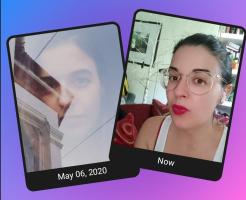Copy Link
Add to Bookmark
Report
Current Cities Volume 06 Number 08

_Current Cites_
Volume 6, no. 8
August 1995
The Library
University of California, Berkeley
Edited by Teri Andrews Rinne
ISSN: 1060-2356
URL:http://www.lib.berkeley.edu/ISIS/current-cites/cc95.6.8.html
Contributors:
Campbell Crabtree, John Ober, Margaret Phillips,
David Rez, Richard Rinehart, Teri Rinne, Roy Tennant
Electronic Publishing
Cantenazzi, Nadia and Forbes Gibb. "The Publishing Process:
The Hyper-Book Approach" Journal of Information Science
21(3) (1995):161-172. -- The authors outline the steps
involved in both paper and electronic publishing. For
electronic publishing, data can be in any number of formats.
Portable, system-independent alternatives to proprietary
encoding schemes include plain ASCII text, which lacks
layout conventions and general markup language, specifically
SGML (Standard Generalized Markup Language), which preserves
logical structural information. Because it is standardized,
SGML can facilitate automatic processing. The hyper-book
system is a set of tools that automate the creation of
electronic books from SGML-encoded files, and provide a
familiar, book-like user interface. The system provides the
user with navigation and orientation tools as well as
bookmark and annotation capability and provides access to
external tools such as word processors and printers. -- CJC
Protsik, Ralph. "How Book Publishers are Staffing for
Multimedia" CD-ROM Professional 8(7) (July 1995):20-30.
-- Protsik addresses staffing issues facing a publisher
moving toward multimedia publishing. He suggests a shift in
thinking is necessary for traditional book publishers
because of the fast-paced, technical environment of
electronic publishing which is similar to that of software
development. The costs of technology are high and new
marketing approaches need to be employed. A good strategy
is to develop multimedia skills in interested editors and
production staff already in place who have valuable
experience in the book industry, as well as to hire in
outside talent for technical development and marketing.
Interesting sidebars give hiring examples (and salaries)
from several large publishing houses. -- CJC
Multimedia and Hypermedia
Hudson, Barry & Drake White. "The Art & Science of Business
Multimedia Development: A Matter of Principles" CD-ROM
Professional 8(7) (July 1995):44-54 -- The author
investigates the problem of building an effective team for
multimedia CD-ROM development. As users develop higher
standards for CD-ROM titles, developers cannot rely on
the technology to sell itself. They must bring together the
business, design, content, and technical units into a
tightly focused team to create a CD-ROM title that whose
design supports access to its content, which supports its
business purpose, and so on. Useful are sidebars which
contrast different approaches for interface design, business
strategy, and content management. -- RR
Mantelman, Lee. "Digital Video: Coming (..Soon?) to an
Application Near You" Imaging Magazine 4(8) (August 1995)
:50-90. -- Actually a suite of articles by the same author,
this detailed explanation of digital video covers software
vs. hardware approaches, software standards for compression
(mpeg, mjpeg, etc.), server solutions, OS considerations,
and is rich with contact information. The article makes a
good technical primer and resource for anyone involved in
creating, storing, or delivering digital video for any
purpose. -- RR
Networks and Networking
Bearman, David. "Museum Strategies for Success on the
Internet" Spectra 22(4) (Summer 1995):18-24. -- The
author offers a broad discussion of issues facing any
cultural heritage institution considering, or even in
the depths of, creating Internet access to information.
The article covers intellectual and data structural
implication, and economic implications, with several
sub-sections of each. Strategies are suggested to create
successful and viable access, such as focusing on the
institution's unique role and fit into the larger
information community. The article questions some
common assumptions, and will provide fresh insights for
even those well-read in this area. -- RR
Bruce, Thomas R. "Choreography for a Dancing Bear: The Web,
Markets, and Strategies," OnTheInternet 1(3) (July/August
1995): 16-25. -- An entertaining and wide-ranging review of
the Web and possible implications for publishing and using
information via this technology. The strengths of this article
come more from making you think about the issues rather than
in presenting conclusions. -- RT
Clement, Gail P. _Science and Technology Resources on the
Internet: An Instructional Guide_. Berkeley, California:
Library Solutions Press, 1995. ISBN: 1-882208-13-7. -- Like
the other books in this series, this volume on Internet
resources in science and technology serves a dual purpose
as both a self-paced guide for individuals who want to learn
about the Internet and as a model training tool for
instructors. The book includes sample searches and several
pages that can be made into overhead transparencies. (The
PLUS version of this workbook comes with Windows and
Macintosh diskettes of the PowerPoint presentation slides
that can either be customized to the instructor's own needs
or used as is.) The section on how to find Internet resources
is particularly useful because it takes Internet training
beyond just a series of commands by providing the tools that
allow students of the Internet to find and discover resources
on their own. Clement also includes important guidelines
for evaluating the quality and value of Internet resources
which, in the all-inclusive universe of the Internet, is an
important way for users to learn how to weed out the junk from
the gems. Although this workbook focuses on science and
technology issues, its straightforward description of the
Internet make this an excellent resource for instructors or
students of any discipline interested in understanding the
Internet. -- MP
Dennis, Anita. "Hot Links" Publish (September 1995):79-84.
-- Some of the best graphics on the Web from a magazine that
should know. Look at them and weep (or run out and employ a
graphic artist). URLs are provided to site that can foster
ideas on how to jazz up your Web server. -- RT
Hupp, Stephen L. "Internet Resources for Conservatism" College
& Research Libraries News 56(7) (July/August 1995):464-466.
-- The Internet, it seems, plays host to the entire political
spectrum and this month's C&RL News includes an article that
highlights many of the major Internet resources for
conservatism. The list includes selected references to
discussion lists, Usenet groups, electronic periodicals,
gopher sites and World Wide Web resources in all areas of
American conservatism and the Republican Party. So, for all
those who need the URL for the "Newt Gingrich WWW Fan Club"
or the "NRA Home Page" or who want to find out how to
subscribe to the Rush Limbaugh discussion list, this article
tells them. -- MP
Peete, Gary R. _Business Resources on the Internet: A Hands-On
Workshop_. Berkeley, California: Library Solutions Press, 1995.
ISBN: 1-882208-11-0. -- Another in the popular Internet Workshop
Series, the third in the series focuses on business resources.
Serving a dual purpose as both a self-paced guide for individuals
who want to learn about the Internet and as a model training tool
for instructors, this volume takes a module-based approach to
introducing the Internet while focusing on business-related
sources. The book includes sample searches and several pages that
can be made into overhead transparencies. (The PLUS version of
this workbook comes with Windows and Macintosh diskettes of the
PowerPoint presentation slides that can either be customized to
the instructor's own needs or used as is.) Peete offers practical
advice for teachers (including advice about what to do when the
technology fails) and a checklist of considerations that
instructors should keep in mind when preparing an Internet class.
Of particular value is the "Best Bets for Exploration" guide which
lists the names and locations of several primary Internet locations
for exploring business-related information and sites. Offering both
practical information (such as Internet addresses and sample
searches) and an introduction to fundamental concepts and strategies
this workbook should prove to be an indispensable guide to anyone
preparing to teach about business sources on the Internet. -- MP
"Star-Spangled Net" Internet World 6(8) (August 1995): 28+.
-- The main topic of this issue is politics on the Web, from
the Congressional Web site Thomas (http://thomas.loc.gov/) to
political activists in the former Soviet Union. One of the most
interesting pieces is an interview with Don Jones, Newt
Gingrich's right hand Internet man and the creator of the Thomas
server. -- RT
Wiggins, Richard. "Spinning Out Documents: Web Servers" New Media
5(8) (August 1995):43-46 -- If you are faced with researching a
Web server solution for your institution, read this article. It
does not provide as much depth as some, but is worth it only if
for the chart showing costs, features, and contact info for 20
Web server software packages and the other showing similar info
for six integrated hardware/software solutions from Sun, Apple,
etc. A brief discussion of platform choice also makes this
article a helpful starting place. -- RR
Wilson, David L. "The Network Has Eyes" Chronicle of Higher
Education 41(45) (July 21, 1995), A17-18. -- Computer system
administrators have traditionally kept logs of online activities
in order to see how people access their records and to monitor
online activities and behavior in general. Internet users,
however, are becoming increasingly concerned that this practice
may be violating their privacy and some Internet scholars have
called on new ethics guidelines so that researchers and systems
administrators can go online without infringing on the rights
of individual Internet users. Until scholars develop systems
that allow administrators to monitor online activities while at
the same time protecting individual privacy, Internet users
need to know that their online activities are being recorded.
-- MP
Optical Disc Technology
Lieberman, Paula. "Taking Measure of Magnetic, Optical, and
Magneto-Optical Media and Drives" CD-ROM Professional 8(7)
(July 1995):62-74. -- Lieberman presents a very complete
overview of a wide range of optical storage options, including
WORM (Write Once Read Many), Erasable, Rewritable, Recordable,
Magneto-Optical, and lesser known technologies such as Floptical,
OROM, P-ROM, LaserCard, and Digital Paper. While all of these
technologies lack the installed base and commercial acceptance
of CD-ROM, many offer distinct advantages, including faster
random access reading, rewritability, and cheaper manufacturing
materials. Substantial sidebars include a the Optical Storage
Technology Association (OSTA) roster and an Optical/Magneto-
Optical Glossary. -- TR
Pahwa, Ash. "Enhanced CD & The Joliet File System" CD-ROM
Professional 8(7) (July 1995):106-107. -- Pahwa discusses two
new standards recently proposed by Microsoft, both of which
will be supported by Windows 95. Enhanced CD is described as
a multisession disc designed primarily to court audio CD fans
as potential buyers of CD-ROM hardware; it reverses the
conventional multisession configuration by placing the audio
tracks in the first session and data in the second session.
The beauty of the Enhanced CD format for CD-ROM users is that
it provides multisession versatility at no additional cost.
The Joliet File System is an extension to the ISO 9660 file
structure (standard format for CD-ROM). Joliet extensions
transcend the inherent limitations and ambiguities of the ISO
9660 specifications, which allows for efficient, multiplatform
information distribution. Pahwa predicts both of proposals
will become de facto industry standards. -- TR
-------------------------------------------------------------------
Current Cites 6(8) (August 1995) ISSN: 1060-2356
Copyright (C) 1995 by the Library, University of
California, Berkeley. All rights reserved.
All product names are trademarks or registered trademarks
of their respective holders. Mention of a product in this
publication does not necessarily imply endorsement of the
product.
[URL:http://www.lib.berkeley.edu/ISIS/current-cites/]
To subscribe, send the message "sub cites [your name]" to
listserv@library.berkeley.edu, replacing "[your name]"
with your name. Copying is permitted for noncommercial use
by computerized bulletin board/conference systems, individual
scholars, and libraries. Libraries are authorized to add the
journal to their collections at no cost. An archive site is
maintained at ftp.lib.berkeley.edu in directory /pub/Current.Cites
[URL:ftp://ftp.lib.berkeley.edu/pub/Current.Cites]. This message
must appear on copied material. All commercial use requires
permission from the editor, who may be reached in the following
ways:
trinne@library.berkeley.edu // trinne@ucblibra // (510)642-8173
--------------------------------------------------------------------






















